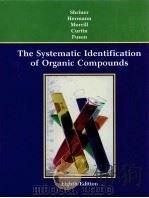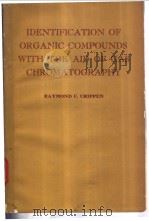《Isotopic Exchange and The Replacement of Hydrogen in Organic Compounds》
| 作者 | 编者 |
|---|---|
| 出版 | Consultants Bureau |
| 参考页数 | 308 |
| 出版时间 | 1962(求助前请核对) 目录预览 |
| ISBN号 | 无 — 求助条款 |
| PDF编号 | 812507648(仅供预览,未存储实际文件) |
| 求助格式 | 扫描PDF(若分多册发行,每次仅能受理1册) |

SECTION Ⅰ.Types of Reagents and Reactions1
1.Oxidizing and Reducing Agents2
2.Acids and Bases2
3.Acidlike Substances4
4.Nucleophilic and Electrophilic Reagents7
5.Wide Definitions of Acids and Bases9
6.Relative and Approximate Nature of the Classification of Reagents10
7.Donor-acceptor Interaction12
8.Heterolytic and Homolytic Reactions16
9.Place of Hydrogen Exchange Among Other Reactions19
10.Summary19
Literature Cited19
SECTION Ⅱ.Acid-Base Catalysis of Hydrogen Exchange21
1.Introduction21
2.Comparison of the Rates of Hydrogen Exchange with Amphoteric and Protophilic Solvents22
3.Comparison of the Rates of Hydrogen Exchange with Amphoteric and Protogenic Solvents25
4.Effect of the Dielectric Constant of the Solvent and the Polarity of Its Molecules on the Hydrogen Exchange Rate27
5.Effect of the Substrate and Catalyst Charge on the Hydrogen Exchange Rate29
6.Effect of Dual Reactivity of a Substance on Hydrogen Exchange33
A.Acceleration of Acid Exchange by a Base33
B.Acceleration of Basic Exchange by an Acid33
C.Inversion of Relative Rates of Hydrogen Exchange with Amphoteric and Protophilic Solvents35
D.Inhibition of Acid Hydrogen Exchange by an Acid36
7.Effect of Steric Hindrance on Hydrogen Exchange38
8.Decrease in the Activity of a Catalyst on Its Reaction with the Substrate40
9.Activation of a Catalyst by a Change of Solvent41
10.Catalytic Activity of Complexes of Hydrogen Acids with Acidlike Substances in Hydrogen Exchange42
11.Br?nsted's Relation in Hydrogen Exchange43
A.Rate and Equilibrium of Protolyte Ionization43
B.Br?nsted's Relation in Hydrogen Exchange46
12.Hammett's Relation in Hydrogen Exchange48
A.Hammett's Acidity Function48
B.Reaction Rate and Acidity Function54
C.Hammett's Relation in Hydrogen Exchange59
13.Salt Effect in Hydrogen Exchange64
14.Acid-Base Catalysis of Hydrogen Exchange in H-H,B-H,N-N,As-h,P-H,O-H,and S-H Bonds66
A.Exchange in H-H Bond66
B.Exchange in B-H Bond67
C.Exchange in N-H Bond67
D.Exchange in P-H Bond70
E.Exchange in As-H Bond70
F.Exchange in O-H Bond71
G.Exchange in S-H Bond72
15.Heterogeneous Acid-Base Hydrogen Exchange72
16.Summary73
Literature Cited74
SECTION Ⅲ.Hydrocarbons as Acids and Bases80
Introduction80
Literature Cited82
Chapter 1.Hydrocarbons as Acids82
1.Metallation of Hydrocarbons83
A.Reactions of Hydrocarbons with Alkali Metals83
B.Reactions of Hydrocarbons with Bases84
2.Saltlike Nature of Organoalkali Compounds86
A.Electrical Conductivity of Solutions87
B.Ionic Reactions88
3.Carbanions88
A.Formation of Carbanions88
B.Spectra of Carbanions89
4.Comparison of the Strengths of Carbo Acids by Metallation Reactions92
A.General Comparison92
B.Classes of Hydrocarbons93
5.Isotopic Exchange of Hydrogen96
A.Amphoteric Solvents96
B.Liquid Ammonia98
C.Liquid Exchange Between Hydrocarbons114
6.Isomerization of Unsaturated Hydrocarbons116
A.Nature of Reaction116
B.Isomerization of Hydrocarbons by Bases117
C.Rules of Isomerization117
7.Alkylation by Olefins119
A.Michael and Analogous Reactions119
B.Alkylation of Amines and Ammonia by Olenfins120
C.Alkylation of Aromatic Hydrocarbons120
D.Dimerization of Olefins123
8.Summary124
Literature Cited124
Chapter 2.Hydrocarbons as Bases130
1.Introduction130
2.Carbonium Ions130
A.Rupture of a Bond Between Carbon and an Electronegative Atom or Group131
B.Exchange Between a Carbonium Ion and a Hydrocarbon133
C.Elimination of a Hydride Ion133
D.Addition of a Proton to an Unsaturated Hydrocarbon134
E.Addition of a Carbonium Ion to an Aromatic Hydrocarbon135
F.Detection of a Carbonium Ion by Deuterium Exchange135
3.Equilibrium Reactions of Hydrocarbons with Acids136
A.Introduction136
B.Liquid Hydrogen Fluoride137
C.Sulfuric Acid149
D.Hydrogen Chloride and Bromide152
E.Carbonium Salts of Haloaluminic Acids157
F.Carboxylic Acids159
4.Equilibrium Reactions of Basic Hydrocarbons with Acidlike Substances161
A.Introduction161
B.Sulfur Dioxide161
C.Halogens162
5.Irreversible Reactions of Basic Hydrocarbons with Acidlike Substances165
6.Isotopic Exchange of Hydrogen Between Hydrocarbons and Acids167
A.Introduction167
B.Aromatic Hydrocarbons168
C.Unsaturated Aliphatic Hydrocarbons180
D.Saturated Hydrocarbons181
7.Summary187
Literature Cited188
Conclusion195
Section Ⅳ.Mechanism of Acid-Base Interaction197
1.Br?nsted's Theory of Acids and Bases197
2.Deviations from Br?nsted's Theory and the Need for Development of the Latter199
3.Noncoulombic Interaction in Solutions of Acids and Salts200
4.Acid-Base Reactions in Aprotic Solvents202
A.Application of Br?nsted's Theory202
B.Inadequacy of Br?nsted's Theory202
5.N.A.Izmailov's Theory of the Dissociation of Acids and Bases202
A.Comparison of the Strengths of Acids in Different Solvents203
B.Reasons for Deviations from Br?nsted's Theory204
C.N.A.Izmailov's Theory206
6.The Role of the Hydrogen Bond in Acid-Base Interaction212
A.Donor-Acceptor Interaction in the Formation of a Hydrogen Bond213
B.Polarity of Molecular Compounds of Acids with Bases214
C.Displacement of Bond Vibration Frequency in the Infrared Absorption Spectrum on the Formation of a Hydrogen Bond220
D.Other Manifestations of a Hydrogen Bond229
7.Range of Protolytic Reactions233
8.Definitions of Acids and Bases236
9.Summary237
Literature Cited238
SECTION Ⅴ.Mechanisms of Hydrogen Replacement Reactions242
Introduction242
Chapter 1.Replacement of Hydrogen by Reaction with a Nucleophilic Reagent244
1.Attack of the Reagent on the Hydrogen Atom of a CH Bond244
A.Electrophilic Substitution Hypothesis and Criticism of It245
B.Metallation-A Protophilic Substitution Reaction245
2.Attack of the Reagent on the Carbon Atom of a CH bond248
A.General Principles248
B.Chichibabin's Reaction249
C.Replacement of Hydrogen in Nitro Compounds251
D.Replacement of Hydrogen in Hydrocarbons253
3.Summary253
Literature Cited253
Chapter 2.Replacement of Hydrogen by Reaction with an Electrophilic Reagent255
1.Orientation Rules255
2.Relation of the Reactivity of a Substance to the"Activity"of the Reagent257
3.Partial Rate Factors of the Repalcement of Hydrogen Atoms in an Aromatic Ring258
A.Definition258
B.Relation Between the"Activity"of the Reagent and the"Selectivity"of the Replacement259
C.Change in the Reactivity of a Substance in Catalysis262
D.Calculation of the Relative Reactivity of Substances from Partial Rate Factors263
4.Reason for Selectivity of Replacement264
5.Role of the Steric Factor in the Replacement of Hydrogen266
6.Participation of Associative and Ionization Processes in Hydrogen Replacement Reactions269
7.Summary273
Literature Cited273
Chapter 3.Mechanisms of Hydrogen Exchange275
1.Comparison of Rules of Hydrogen Exchange and Other Replacements of Hydrogen in Aromatic Compounds275
A.Basic Hydrogen Exchange275
B.Acid Hydrogen Exchange279
2.Mechanisms of Hydrogen Exchange283
A.A.I.Brodskii's Classification283
B.Associative and Ionization Mechanisms of Hydrogen Exchange286
3.Summary290
Literature Cited291
Conclusion293
Appendix:Preparation of Deuterated Organic Compounds295
1.Introduction295
2.Methods of Preparing Deuterated Organic Compounds296
3.Synthesis of Deuterated Organic Compounds297
A.Reduction297
B.Hydration and Hydrolysis298
C.Ammonolysis299
D.Condensation300
E.Decarboxylation300
4.Isotopic Exchange of Hydrogen300
A.Hydrogen Exchange with Heavy Water and Deuteroalcohol300
B.Hydrogen Exchange with Deuterosulfuric Acid301
C.Hydrogen Exchange with DC1+A1C13301
D.Hydrogen Exchange With Liquefied Gases302
5.Comparison of Methods of Preparing Deuterium Compounds304
Literature Cited306
1962《Isotopic Exchange and The Replacement of Hydrogen in Organic Compounds》由于是年代较久的资料都绝版了,几乎不可能购买到实物。如果大家为了学习确实需要,可向博主求助其电子版PDF文件(由 1962 Consultants Bureau 出版的版本) 。对合法合规的求助,我会当即受理并将下载地址发送给你。
高度相关资料
-

- PROCRESS IN ELECTROCHEMISTRY OF ORGANIC COMPOUNDS 1
- 1971 PLENUM PRESS
-

- COMPREHENSIVE ORGANIC CHEMISTRY The Synthesis and Reactions of Organic Compounds Volume 5 Biological
-
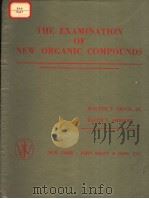
- THE EXAMINATION OF NEW ORGANIC COMPOUNDS
- NEW YORK·JOHN WILEY & SONS INC
-
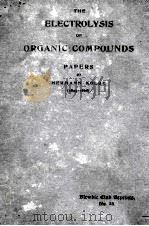
- THE ELECTROLYSIS OF ORGANIC COMPOUNDS
- 1915 THE UNIVERSITY OF CHICAGO PRESS
-

- COMPREHENSIVE ORGANIC CHEMISTRY THE SYNTHESIS AND REACTIONS OF ORGANIC COMPOUNDS VOLUME 5 BIOLOGICAL
- 1979 PERGAMON PRESS
-

- INORGANIC CHEMISTRY SERIES TWO VOLUME 6 TRANSITION METALS-PART 2
- 1975 BUTTERWORTHS UNIVERSITY PARK PRESS
-
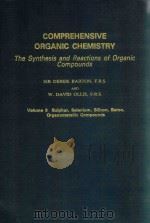
- COMPREHENSIVE ORGANIC CHEMISTRY THE SYNTHESIS AND REACTIONS OF ORGANIC COMPOUNDS VOLUME 3
- 1979 PERGAMON PRESS
-

- COMPREHENSIVE ORGANIC CHEMISTRY THE SYNTHESIS AND REACTIONS OF ORGANIC COMPOUNDS VOLUME 4 HETEROCYCL
- 1979 PERGAMON PRESS
-

- COMPREHENSIVE ORGANIC CHEMISTRY THE SYNTHESIS AND REACTIONS OF ORGANIC COMPOUNDS VOLUME 1
- 1979 PERGAMON PRESS
-

- THE ORGANIC CHEMISTRY OF ALIPHATIC NITROGEN COMPOUNDS
- 1994 CLARENDON PRESS
-

- The characterization of organic compounds
- 1953 The Macmillan company
提示:百度云已更名为百度网盘(百度盘),天翼云盘、微盘下载地址……暂未提供。➥ PDF文字可复制化或转WORD


